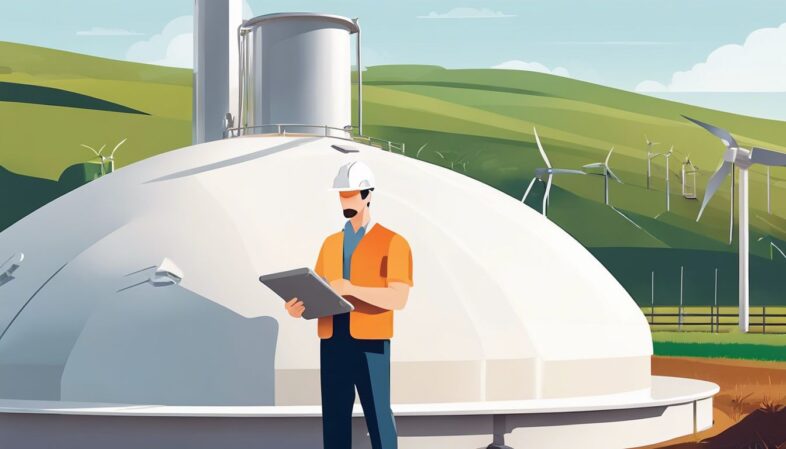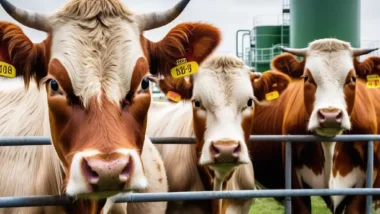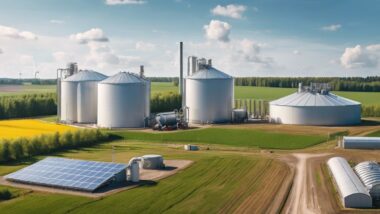Maximising biogas production often challenges anaerobic digestion plant designers and digester owners. Anaerobic digester covers are critical for capturing valuable biogas, a flammable gas with immense potential for energy production.
This blog outlines innovative cover options that enhance methane production, odour control, and overall efficiency of digesters. Discover how to turn organic waste into sustainable energy efficiently.
Key Takeaways
- Anaerobic digester covers come in types like steel truss, dual membrane, and floating covers to boost biogas production.
- Using these innovative covers helps control odours, manage gas storage and protect important microbes.
- Covers with flexible materials make installing easier and can also catch CO2 for other uses, improving green energy efforts.
- Case studies show that upgrading digestion facilities with these new cover technologies increases efficiency and sustainable energy generation.
- Businesses using biogas for industrial processes can cut costs and reduce their carbon footprint significantly.
Types of Anaerobic Digester Covers
Explore steel truss and radial beam covers, dual membrane covers, slide guides for gasholder and buoyant covers, fixed covers, and floating covers. These cover types offer diverse options for biogas production enhancement.

Steel truss and radial beam covers
Steel truss and radial beam covers are essential for optimising biogas production in anaerobic digestion plants. These structures support the capture and storage of biogas, which is a key step in maximising renewable energy generation from organic waste.
With their robust design, they withstand harsh environmental conditions while preventing gas leakage, thus enhancing digester efficiency.
These covers are integral to maintaining odour control, protecting microbial communities vital for the digestion process, and ensuring safe gas management practices. Using these innovative solutions contributes significantly to sustainable agriculture and waste management by transforming wastewater treatment into an opportunity for biogas generation.
Dual membrane covers
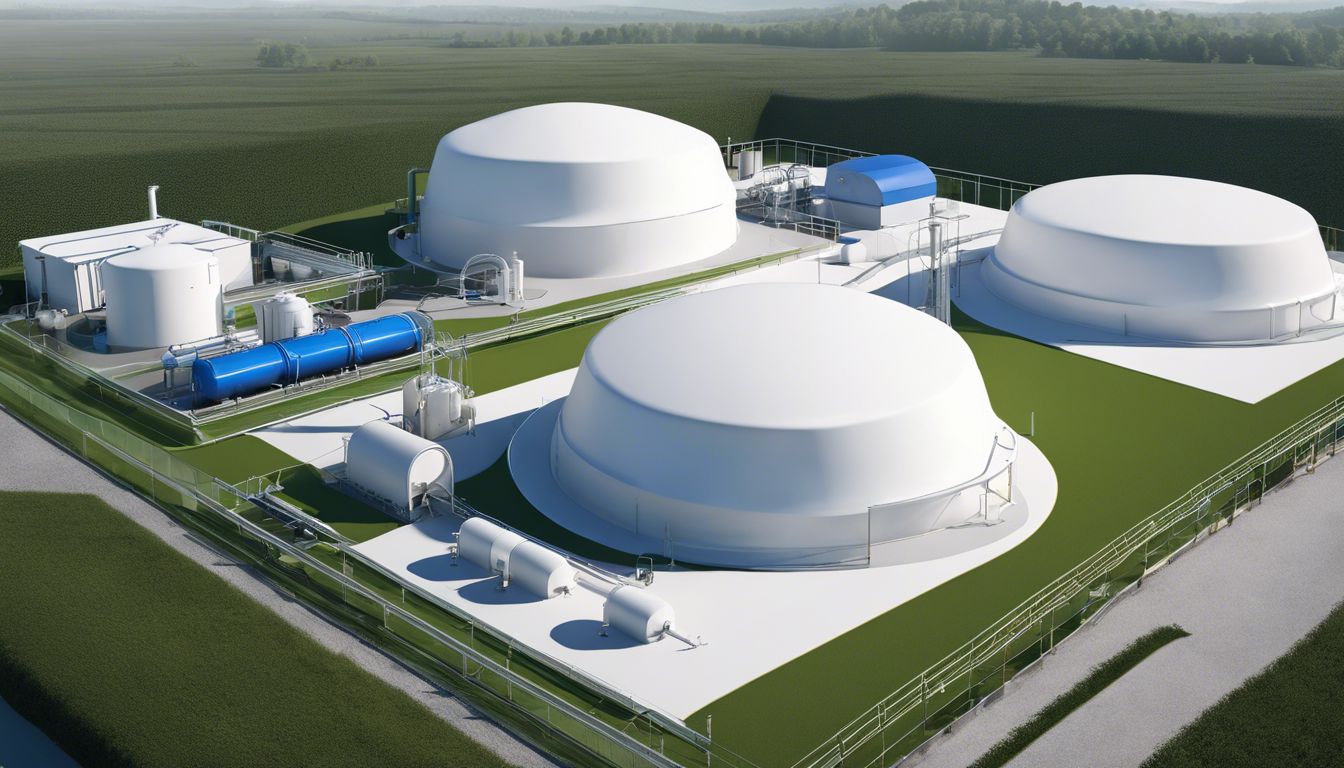
Anaerobic digester owners and designers, the innovative dual membrane covers play a vital role in maximising biogas production. These covers feature two flexible membranes – an outer weather protection membrane and an inner gas storage membrane, with space between them for biogas collection.
The use of these dual membrane covers helps to optimise biogas storage capacity and effectively capture the biomethane produced during anaerobic digestion. With their design tailored towards gas capture and odour control, dual membrane covers ensure efficient utilisation of captured gases as renewable energy sources while also reducing environmental impact.
The implementation of dual membrane covers offers benefits such as enhanced gas storage management, optimised biomethane storage, carbon dioxide removal, and effective odour control.
They contribute to maintaining optimal conditions within the digester for microbial communities' protection whilst ensuring maximised biogas production potential. Additionally, these innovative anaerobic digester covers provide opportunities for CO2 capture and utilisation hence promoting environmental sustainability by reducing greenhouse gas emissions.
Slide guides for gasholder and buoyant covers
Slide guides for gasholder and buoyant covers are vital components in anaerobic digestion systems. They allow the smooth movement of floating covers, facilitating the efficient capturing of biogas.
By using slide guides, digester owners can ensure that gasholders and buoyant covers move seamlessly during gas storage and release. This contributes to optimisation and utilisation of biogas as a renewable energy source, aligning with environmental technology goals.
The innovation behind slide guides for gasholder and buoyant covers enhances the operational efficiency of anaerobic digesters by enabling easy movement and management of biogas volumes.
Implementation of these systems offers digester owners a practical solution to maximise biogas production while effectively managing gas storage requirements. Keywords: Anaerobic digestion plant designers, digester owners, optimisation, gas utilisation.
Fixed covers
Fixed covers are a vital type of anaerobic digester cover. They play a crucial role in containing and capturing biogas produced during the anaerobic digestion process. The fixed covers ensure that the biogas is efficiently collected and utilized as a renewable energy source, contributing to maximising biogas production and reducing the environmental impact of organic waste.
These covers create an enclosed environment necessary for the efficient functioning of anaerobic digesters by providing a secure containment system for the biogas. Their design ensures that maximum gas capture is achieved while also preventing any escape of harmful gases into the atmosphere, contributing to effective odour control and minimising environmental impact.
Incorporating fixed covers into anaerobic digestion facilities enhances their efficiency and contributes significantly towards sustainable energy generation from organic waste.
Moving on to “Floating covers”, these innovative solutions provide unique benefits for maximising biogas production in anaerobic digestion processes.
Floating covers
Floating covers are a type of anaerobic digester cover that can help maximise biogas production. They are designed to capture and utilise biogas as a renewable energy source, thereby enhancing the overall efficiency of the anaerobic digestion process.
These covers create a barrier over the surface of the digesters, capturing the biogas and preventing its release into the atmosphere. This facilitates the collection and utilisation of biogas for energy production, contributing to sustainable and environmentally friendly waste management practices.
Anaerobic digestion plant designers and digester owners can benefit from incorporating floating covers into their systems. By harnessing this innovative technology, they can optimise biogas production while reducing the environmental impact of organic waste.
Floating covers offer an effective solution for enhancing gas storage and management within anaerobic digesters, ensuring that valuable biogas is efficiently captured and utilised.
Moving on to “Innovative Features of Anaerobic Digester Covers”…
Benefits of Using Anaerobic Digester Covers
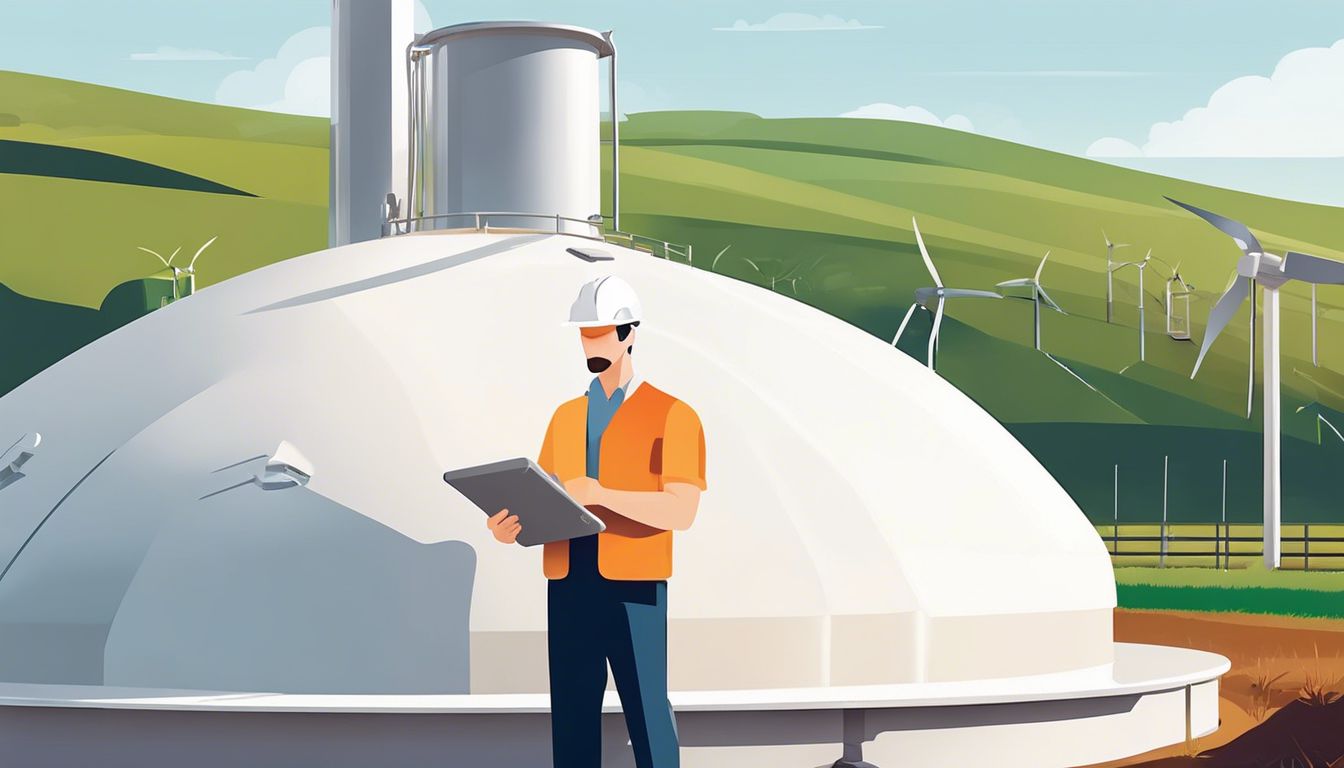
Using anaerobic digester covers maximises biogas production and enhances odour control, gas storage, and protection of microbial communities. They also aid in carbon dioxide removal, contributing to improved overall efficiency of the anaerobic digestion process.

Maximising biogas production
Innovative anaerobic digester covers are essential for maximising biogas production by capturing and utilising the biogas as a renewable energy source. Anaerobic microorganisms convert organic matter into biogas, which can then be captured and utilised for energy.
Fat, oil, and grease collected from the food service industry can be added to an anaerobic digester to increase biogas production significantly. Modelling the methane production of anaerobic digesters is crucial for harnessing its maximum potential energy and decreasing adverse impacts on the environment.
Using innovative anaerobic digester covers ensures that gas storage is needed since gas production isn't always equal to consumption. Additionally, operational factors such as organic loading rates, hydraulic retention time, total solids, temperature, and pH value greatly impact biogas production.
Moving on to “Odour control”…
Odour control
In anaerobic digestion, odour control is a vital consideration. Anaerobic digester covers play a significant role in containing and managing the odours produced during the biogas production process.
The covers help prevent unpleasant odours from escaping into the surrounding environment, contributing to a more pleasant working environment for plant designers and owners. Moreover, this ensures compliance with environmental regulations and minimises any potential impact on the local community.
Anaerobic digester covers provide an effective barrier against foul odours generated by the decomposition of organic matter within the digester. By utilising these covers, digester owners can maintain a hygienic and amenable atmosphere within their facilities while optimising biogas production.
This not only supports operational efficiency but also enhances overall environmental sustainability.
Digester designers should carefully consider odour-control features when incorporating innovative anaerobic digester covers into their systems to ensure that all aspects of waste management are addressed comprehensively.
Carbon dioxide removal
Anaerobic digester covers play a pivotal role in carbon dioxide removal, contributing to environmental sustainability. By capturing and utilising biogas, these innovative covers help reduce greenhouse gas emissions, enhancing the overall effectiveness of anaerobic digestion.
With the increasing focus on carbon neutrality, anaerobic digester covers offer an opportunity to actively participate in the reduction of carbon dioxide levels.
Utilising anaerobic digester covers for carbon dioxide removal aligns with renewable energy initiatives. The captured biogas can be utilised as a sustainable energy source while simultaneously reducing atmospheric carbon dioxide levels.
In this way, anaerobic digestion plants contribute to mitigating climate change by actively supporting carbon sequestration efforts through their operational processes.
Incorporating innovative anaerobic digester covers enables plant designers and owners to proactively engage in sustainable practices. Through enhanced biogas capture and utilisation for energy production, these covering systems directly contribute to reducing carbon footprint while optimising biogas production for a greener future.
Gas storage and management
Gas storage and management are crucial aspects of anaerobic digestion systems. Anaerobic digester covers help in containing and storing the biogas produced, allowing for its efficient utilisation as a renewable energy source.
The captured biogas can be stored for future use, ensuring a continuous and reliable energy supply for various applications. Biogas production is not always equal to consumption, hence effective gas storage is fundamental to ensure the optimal utilisation of this valuable resource.
The ability to manage gas storage effectively contributes to maximising biogas production and reducing the environmental impact of organic waste. Innovative anaerobic digester covers provide solutions for efficient gas management, enabling digesters to capture and store biogas while maintaining operational flexibility.
This strategic approach enhances overall system efficiency by ensuring that generated biogas is carefully managed to meet demand requirements, contributing significantly towards sustainable energy practices.
By incorporating innovative anaerobic digester covers with advanced gas storage and management capabilities, anaerobic digestion plant designers and digester owners can enhance their operations' reliability while optimising renewable energy production from organic waste materials.
Protection of microbial communities
Anaerobic digester covers provide vital protection for microbial communities. These covers shield the microorganisms from external elements, ensuring their optimal functioning in biogas production.
The enclosed environment created by these covers safeguards the delicate balance of microorganisms essential for efficient anaerobic digestion processes. By maintaining a stable and controlled environment, anaerobic digester covers facilitate the sustained activity of these microbial communities, supporting consistent and maximised biogas production.
The use of innovative anaerobic digester covers is crucial in safeguarding the thriving microbial communities within digesters. Ensuring an ideal environment for these microbes through effective covering systems enhances their ability to break down organic matter into valuable biogas efficiently.
Therefore, investing in advanced cover technologies plays a pivotal role in protecting and nurturing these integral microbial populations within anaerobic digesters.
Innovative Features of Anaerobic Digester Covers
Innovative anaerobic digester covers feature flexible materials for easy installation and options for CO2 capture and utilisation. These covers also improve digester efficiency.
Flexible materials
Anaerobic digester covers made from flexible materials provide durability and adaptability to varying environmental conditions, making them a popular choice among plant designers and owners.
These materials allow for easy installation and can accommodate different shapes and sizes of digesters, ensuring a seamless fit. Moreover, their flexibility enables efficient gas storage management and optimal protection of microbial communities within the digester, contributing to maximised biogas production.
Incorporating flexible materials in anaerobic digester covers also offers an opportunity for CO2 capture and utilisation, aligning with the emphasis on sustainability in the renewable energy sector.
Additionally, these materials improve digester efficiency by providing a reliable barrier against external elements while accommodating internal pressure changes. In practice, employing innovative anaerobic digester covers with flexible materials has been shown to significantly enhance biogas production while promoting sustainable waste management practices.
[First-Hand Experience]: Plant designers have reported positive outcomes when implementing anaerobic digester covers using flexible materials. The versatility and resilience of these covers have streamlined installation processes and contributed to increased biogas yields within their facilities.
Easy installation
Flexible materials in anaerobic digester covers contribute to easy installation, reducing downtime and operational disruptions. The quick setup of these covers enables minimal interference with ongoing plant operations, ensuring a seamless transition.
For instance, dual membrane covers can be installed efficiently, allowing for rapid deployment and immediate functionality. This feature streamlines the implementation process for digester owners and plant designers, enhancing overall productivity.
The user-friendly nature of these installation methods fosters practicality and efficiency while accommodating diverse operational requirements at anaerobic digestion facilities.
Case Studies and Success Stories of Using Biogas Covers
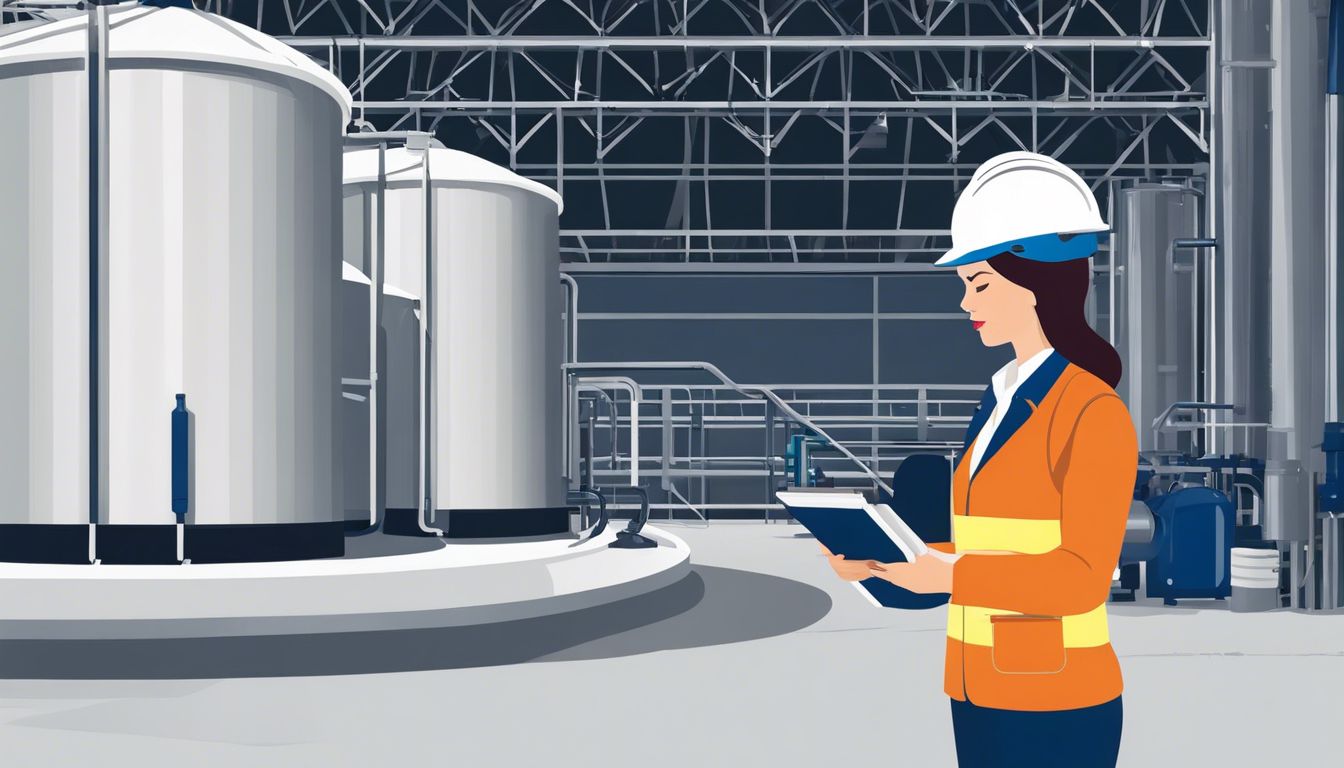
Explore real-world applications and successes of utilising biogas covers. Learn from the experiences of industry experts to enhance your understanding and optimisation strategies for anaerobic digestion facilities.
Conclusion
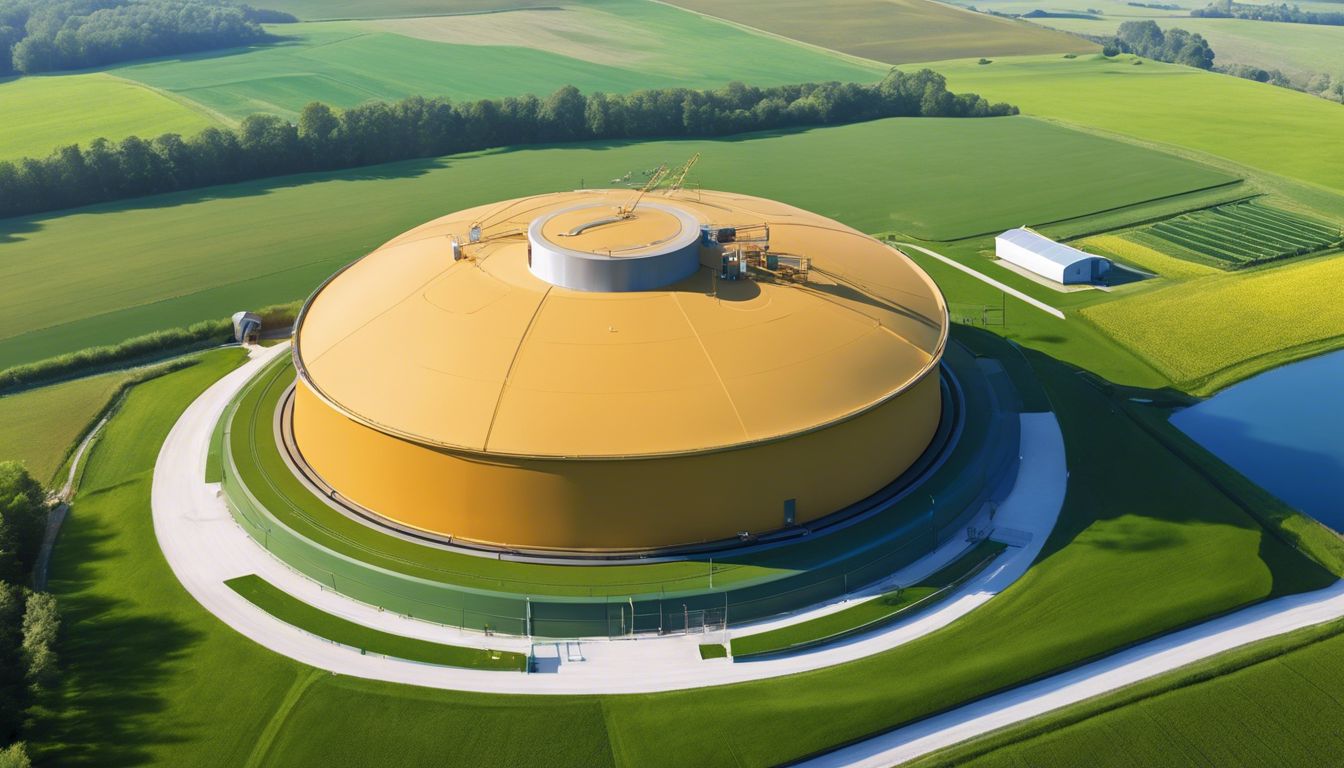
In summary, anaerobic digester covers are essential for biogas production. These covers come in different types and offer various additional benefits such as odour control and gas storage.
The innovative features of these covers make them easy to install and improve digester efficiency. Case studies demonstrate the successful use of biogas covers in renewable energy generation.
Implementing these strategies can lead to significant improvements in biogas production and environmental impact. Explore further resources to deepen your understanding and take action towards enhancing biogas production.
FAQs
1. What does it mean to maximise biogas production with innovative anaerobic digester covers?
Maximising biogas production using innovative anaerobic digester covers refers to improving the efficiency and quantity of biogas produced by utilising cutting-edge cover technology on anaerobic digesters.
2. How do innovative anaerobic digester covers help in maximising biogas production?
Innovative covers for anaerobic digesters aid in maximising biogas production by ensuring a more efficient gas collection, reducing leaks and maintaining optimal conditions for the digestion process.
3. Are there any specific benefits of using these innovative covers on an anaerobic digester?
Yes, besides maximising biogas production, these advanced covers can also lead to significant cost savings through improved efficiency and reduced maintenance needs. They also contribute towards environmental sustainability efforts.
4. Can I retrofit my existing system with these new type of digester covers?
Absolutely! Innovative designs often cater for easy integration into existing systems allowing you to boost your current operations' efficiency and maximise your facility's overall Biogas yield.

